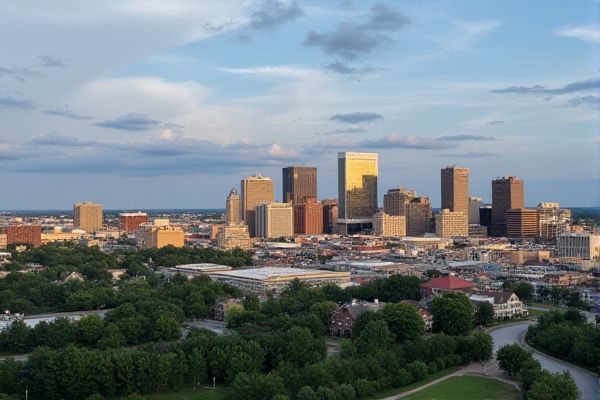
Housing market and best cities to live in Minnesota: Diverse housing options available statewide. Minneapolis: vibrant city with cultural richness. St. Paul: historic charm and urban appeal. Rochester: growing healthcare hub community. Duluth: scenic beauty by Lake Superior. Rising housing prices; competitive market. Affordable cost of living in suburbs. Strong job market influencing housing demand. Seasonal weather impacts housing preferences. Community-focused neighborhoods offer high quality.
Diverse housing options available statewide.
The Minnesota housing market offers diverse options statewide, with urban areas like Minneapolis and St. Paul featuring modern condos and historic homes, suburban areas such as Edina and Maple Grove offering larger homes and excellent schools, and rural regions like Rochester and Winona providing a mix of affordable and new developments influenced by local economic drivers and amenities. For a detailed breakdown of housing trends and options in different areas, visit the Minnesota Housing Market by Region page. Whether you're seeking the vibrant life of the cities or the tranquility of the countryside, Minnesota's varied real estate landscapes cater to a wide array of preferences and needs.
Minneapolis: vibrant city with cultural richness.
Minneapolis is a vibrant city known for its cultural richness, featuring numerous museums, two full-time professional orchestras, and a renowned opera company. It offers easy access to natural recreation, ample amenities, and relatively affordable housing, making it the top place to live in Minnesota. For more insights into this city, you can explore the Best Places to Live in Minnesota list on Redfin's website.
St. Paul: historic charm and urban appeal.
St. Paul offers a housing market with historic charm and urban appeal, featuring charming bungalows, Victorian homes, and quiet tree-lined streets. This makes it ideal for those seeking a slower pace of life with easy access to parks and green spaces. The median home sale price here is approximately $287,298, highlighting its affordability and appeal for homebuyers.
Rochester: growing healthcare hub community.
Rochester, Minnesota, is experiencing significant growth driven by Mayo Clinic's $5 billion expansion, but it faces a housing shortage with a need for about 14,000 new housing units by 2030. Despite the challenges, Rochester remains a desirable place to live due to its strong healthcare sector, affordable housing relative to other Minnesota cities, and ongoing community development efforts. For more detailed insights, the Mayo Clinic might hold potential solutions to this pressing issue.
Duluth: scenic beauty by Lake Superior.
Duluth, Minnesota, offers a robust and competitive housing market, driven by its scenic beauty on Lake Superior, outdoor recreational opportunities, a strong economy with major employers like the University of Minnesota Duluth and Essentia Health, and a vibrant arts and culture scene. The city sees high demand for homes, particularly in the $300,000-$400,000 price range, with a trend towards a more balanced market and increased housing inventory. For more insights into this dynamic market, visit the Duluth Real Estate Market to explore current trends and statistics.
Rising housing prices; competitive market.
Minnesota's housing market in 2024 is expected to see stable to slightly rising home prices, with a 1-3% increase, due to a competitive market driven by high demand and tight inventory, favoring sellers, especially in desirable locations like suburban areas such as Eden Prairie, Woodbury, and Plymouth. For more detailed insights, you can refer to the Real Estate Forecast 2024 which provides an in-depth analysis of these market trends.
Affordable cost of living in suburbs.
Minnesota's suburban areas, such as Eden Prairie, Woodbury, and Plymouth, offer an affordable cost of living with larger homes and more space, making them attractive options for buyers seeking a balance between affordability and quality of life. These suburbs provide more affordable housing compared to urban areas like Minneapolis and St. Paul, while still offering excellent schools and a slower pace of life. For more insights into this dynamic, you can explore the perspectives offered by Excelsior Real Estate to better understand the real estate market trends in Minnesota.
Strong job market influencing housing demand.
Minnesota's housing market is driven by a strong job market, with low unemployment rates and significant job growth, particularly in cities like Rochester, which is experiencing a year-to-year job increase, and the Twin Cities, where sectors like finance, healthcare, and technology are boosting demand for housing. For more comprehensive insights into the state's real estate trends and economic influences, explore the Minnesota Housing Market Trends Forecast which details these dynamic market forces.
Seasonal weather impacts housing preferences.
In Minnesota, the housing market is significantly influenced by seasonal weather, with peak home sales and prices occurring in the spring and summer months due to favorable weather and school schedules. Meanwhile, during the winter months, sales slow down and prices tend to lower because of colder weather and holiday distractions. For more insights on this topic, the Seasonality Of Real Estate In Minnesota provides valuable information on how these patterns impact real estate trends.
Community-focused neighborhoods offer high quality.
Community-focused neighborhoods in Minneapolis, such as Uptown, Nokomis, and the Greater Longfellow area, offer high quality of life with strong community engagement, diverse housing options, and rich cultural activities, making them highly desirable for various lifestyles and budgets. Additionally, neighborhoods like Hale, Fulton, and Linden Hills in Minneapolis are highlighted for their family-friendly environments, low crime rates, quality schools, and strong rental markets. These attributes make them attractive for both residents and real estate investors seeking a high quality of life and potential for economic returns. If you are interested in learning more, you might want to explore this Real Estate Neighborhood Guide for further insights.
